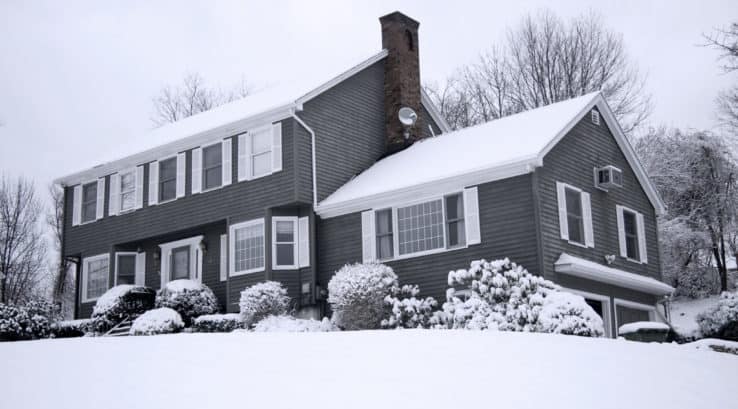Snow blanketing roadways and sidewalks can be a dangerous situation, but snow covering your home on the other hand can mean the sign of a healthy roof.
While a snowstorm can keep you busy shoveling, it’s also a good time to get a good look at your roof and check for hot spots. Snow makes it easy to see where your home is leaking heat through the roof. The best snowfall for a roof check is one that drops about an inch of snow but includes little wind. Asphalt shingle roofs should remain covered in show if the temperature fails to rise above 32 degrees. If you notice snow that seems to be melting in specific spots on your roof you’ve got a situation where heat is escaping there due to poor or lack of insulation or a failing roofing system.
Ideally, snow should melt according to the outside temperature, not influenced by the temperature inside your home. If the snow on your roof is melting at an inconsistent rate to your neighbor’s home, you have some investigating to do!

Here are some things that could cause your roof to lose heat.
- Attic Insulation
If your attic is not properly insulated you might have patchy spots of melting snow where it is doing a better job of trapping heat and where it is allowing heat to escape.
- Recessed lighting fixtures that abut the attic.
These canned lights can help draw heat straight up into the attic.
- Missing shingles
Not only do missing shingles allow water to seep into your attic, it allows heat to escape out.
Your roof decking is the structural component of your roof. Mold and mildew can grow on damaged decking and impact the integrity of the roof
- Failed seals around your chimney or roof vents.
Gaps around the chimney or vents allows water from melting snow or rain to leak into your home. It also quietly is letting your heating dollars disappear right out of the roof.
In addition to providing clues to your home’s heat loss problems, melting snow on your roof can also be the cause of another issue. Because the snow is melting from a heat loss on your roof and not because of warming temperatures, the melted snow can refreeze once it travels from your roof, creating ice dams that appear as icicles on the eaves and gutters. Water trapped by these ice dams will travel between shingles or under soffits eventually appearing as water dripping into your ceiling or walls.
Taking a little break from shoveling to admire your roof can provide you with some valuable insight into how it’s performing. Our Thompson Creek experts are available to conduct a full roofing inspection for you if this winter’s flakes have acted as clues to discover unseen issues with your roofing system. Your roof plays a critical role in keeping you safe and healthy. At Thompson Creek our role is to design, build and install a roofing system for you that uses the best materials, our own professional installers and is covered by our No Hassle Warranty. Call us today for a free consultation.


